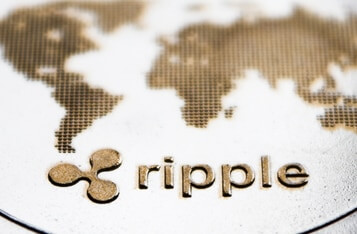Tony Kim
16 Jul 2024 04:31
Asset tokenization is set to revolutionize the financial sector with an estimated $16 trillion in value by 2030. Learn about key insights and challenges.
Today, the estimated value of asset tokenization is $3.5 billion, and projections suggest it could reach $16 trillion by 2030. This rapidly growing market represents a huge opportunity, but what’s stopping the technology from realizing its full potential? This question was at the center of discussion at the London Tokenisation Policy Summit, hosted by Ripple (XRP) and Imperial College Business School’s Centre for Financial Technology earlier this year.
Tokenization Use Cases: The “Real” of Digitization
Tokenization promises to eliminate payment gateway intermediaries, improve payment processor efficiency, ensure data protection, privacy and transparency, and enable real-time payments. These features position tokenization as a transformative feature of blockchain technology that has the potential to have a significant impact across a wide range of sectors.
The applications are wide ranging, from tokenized mortgages, consumer loans, and microcredit to real estate purchases and treasury bonds. Tokenization can improve capital flow for small businesses, improve the efficiency of carbon credit trading, and provide better price discovery compared to traditional assets.
However, challenges to mainstream adoption remain. The lack of well-established special purpose companies complicates tokenization of real-world assets. Cross-chain protocols are needed for better interoperability, and limited liquidity in secondary markets increases investment risk. Providers who can simplify tokenization into a single offering are needed to break down silos across the financial ecosystem.
To overcome these obstacles, three key areas have been identified that need to be emphasized: collateral, valuation, and passkeys. Ensuring that tokens are backed by sufficient reserves, maintain internationally consistent value, and are protected by secure key management will help drive trust and adoption.
A new financial framework
A strong regulatory framework is essential to support a tokenized economy. Such a framework will provide the necessary structure, safeguards and trust for sustainable growth and development. Regulatory differences across countries in Europe, in particular, pose significant challenges. Differing traditional ownership rights within EU member states impede a pan-EU approach.
There are also gaps in digital asset governance. For example, Luxembourg boasts a digital security depository, while the UK does not. As the use of distributed ledger technology increases in financial markets, these gaps could lead to regulatory arbitrage.
Communication with policymakers is critical to addressing these issues. Public-private collaboration is essential to developing regulatory development and government policies that support innovation. Understanding the benefits of tokenization is especially important for those outside the financial sector.
The UK is committed to fostering digital innovation through improved policies to compete with larger markets such as the US and China. It aims to promote digital assets by empowering financial regulators to create flexible rulebooks, support harmonized risk management initiatives, and address international opportunities and challenges. A new UK framework for crypto tokens and digital assets, including stablecoins, is currently under development.
Future Prospects
Tokenization is not just a buzzword. It is a rapidly growing movement that is poised to reshape the financial landscape. By improving efficiency and interoperability across borders, tokenization can significantly reduce the 5-6% of global GDP lost to systemic friction each year, increasing long-term profits for all market participants.
Banks, traditional financial institutions, and regulators are key to driving tokenization adoption. To realize its full potential, a collaborative effort is needed that integrates policies that enable scale, regulatory clarity, ongoing education, and collaboration.
For more details, read the full article at ripple.com.
Image source: Shutterstock

